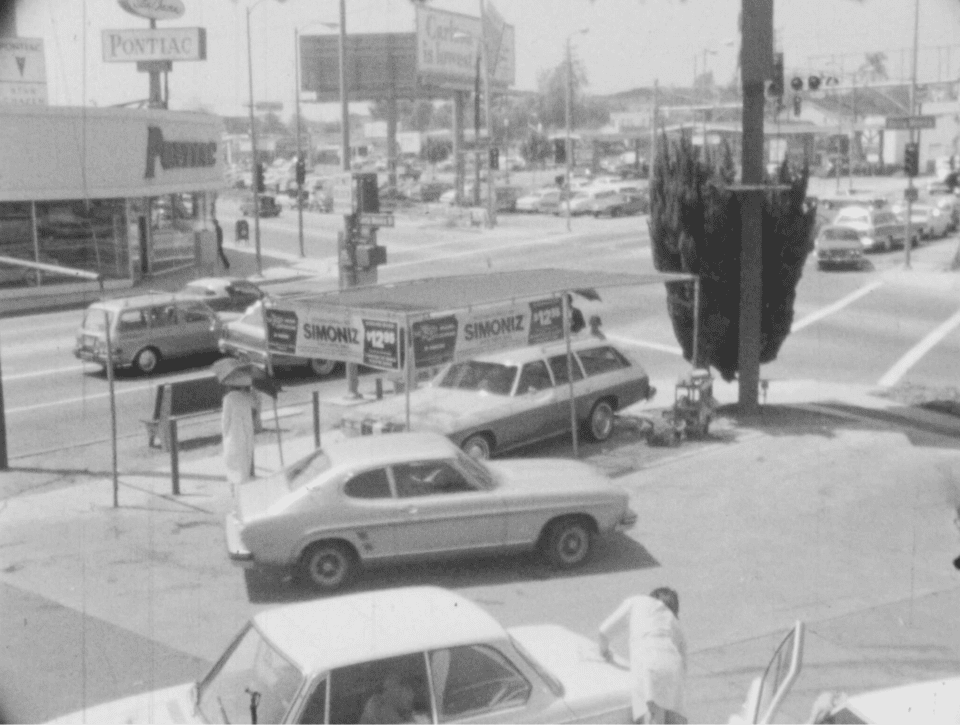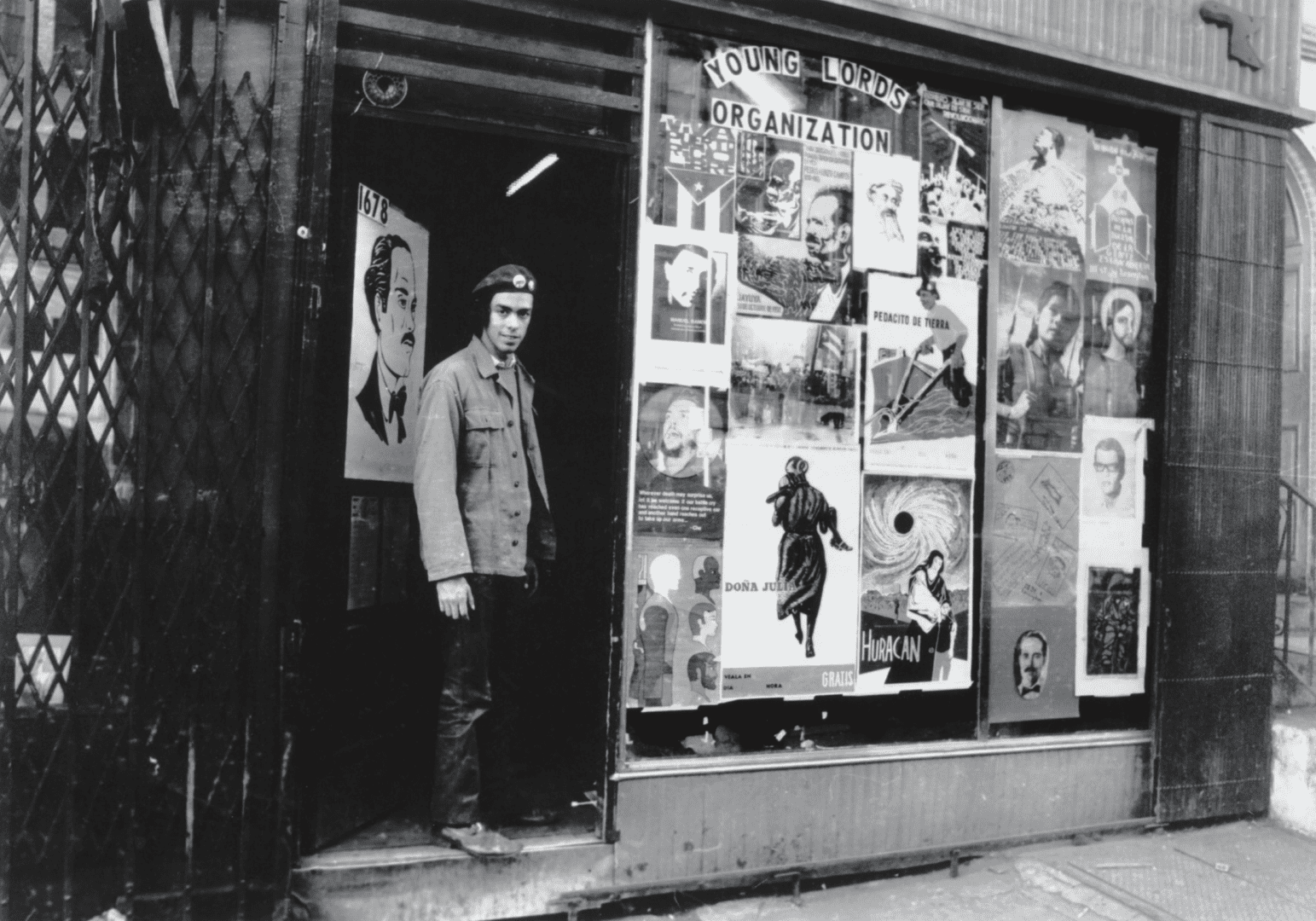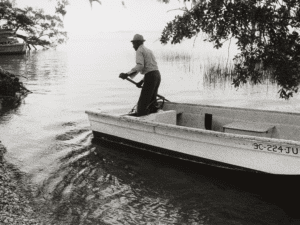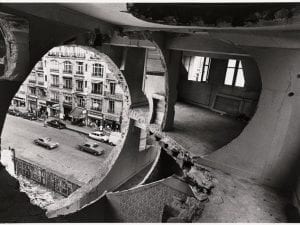The American landscape has long occupied a place in popular imagination. Plains and prairies, home to cowboys and saloons, are often the first thing to come to mind when someone mentions the “American West”. It’s an image fed to us by popular culture: films, TV and games. Artists have often contributed to this narrative, with many providing romanticised views of the USA. Many of the country’s most famous 20th century photographers, like Ansel Adams, Edward Weston and Carlton E. Watkins, documented the nation’s sweeping vistas and picturesque views in their images. Shifting Landscapes, the latest show at Whitney Museum of American Art, New York, complicates this narrative. The exhibition features 120 works by 80 artists, who address the landscape as not just something to be admired for its aesthetic appeal, but as a backdrop to, and integral component of, social, economic and political events. The show is a powerful reflection on the complexities of modern American life, asking vital questions about how society shapes, and is molded by, its surroundings.

Shifting Landscapes includes work that span more than 50 years, from pioneering 20th century figures such as Gordon Matta-Clark and Jean-Michel Basquiat, to contemporary names like Teresita Fernández. There’s a focus on the city as well as the great outdoors: Matta-Clark sought to form new understandings of a subject’s relationship to built-up space, whilst Basquiat’s graffiti-like images and scrawled text depicted the changing neighbourhoods of New York. Meanwhile, Fernández creates large-scale sculptures inspired by the elements, often drawing attention to how spaces are in constant flux. These artists, alongside the 80 others featured in the show, present a new way of looking at the American landscape. They depict the effects of industrialisation on the environment, grapple with the impact of geopolitical borders and reconsider the symbiotic relationship between people and the natural world. Jennie Goldstein, Associate Curator of the Collection said: “Shifting Landscapes reflects the Whitney’s ongoing commitment to telling diverse stories in American art. Landscape – in its formal, social, and political implications – feels like a particularly dynamic and urgent subject today, and we are excited that over half of the works in this exhibition are new to the collection and on view at the Museum for the first time.”
The exhibition opens with an examination of “New Topographic”, a stark style of photography that debuted in 1975 with New Topographics: Photographs of a Man-Altered Landscape. The movement focused on human-made and manufactured structures, often documenting parking lots, suburban housing and warehouses. First exhibited at the Internationa Museum of Photography in Rochester, New York, the artists involved had a decisive influence on photography as an artform. The images reflected a growing unease about how industrial development was eroding the natural world. Shifting Landscapes includes work from this pivotal period, such as Robert Adams’ Outdoor Theatre. Colorado Springs. Colorado. (1968-1971). The series recorded the residential sprawl along the Rocky Mountains in a straight-on and detached style. These fears have become more pressing than ever, as the world now faces consequences of human behaviour with the climate crisis. According to a Center for American Progress report, the human footprint of the USA grew by more than 24 million acres from 2001 and 2017. Now, Whitney brings the story of New Topographics up-to-date by showcasing an abundance of contemporary examples. Recent photographs by LaToya Ruby Frazier, An-My Lê, and Piliāmo’o carry on the aesthetic tradition with more pointedly political undertones. Frazier often focuses on how her hometown of Braddock, Pennsylvania, became financially depressed after the collapse of the steel industry in 1970s. The artist said: “There has to be a deep empathy. There’s a need to be compassionate and [to] want to really, truly see someone’s humanity when they’re at their lowest.” The works push beyond the “New Topographic” concern of human encroachment on the landscape, centring how these intrusions affect real lives and communities.

New York is key to the exhibitions exploration of “cityscapes”: a case study for how buildings and towns are as much part of national landscapes as untouched wilderness. The works range from the 1970s to 2020, as artists document and reflect on how the city has changed over time. The show foregrounds artistic experimentation amidst the economic decay and social turmoil of the 1970s, such as in Hiram Maristany’s photograph Hydrant: In the Air (1963) and Anita Steckel’s painting Skyline on Canvas #1 (Woman Pressing Finger Down). In the 1980s and 1990s, as New York became more globalised, works such as Jean-Michel Basquiat’s painting Untitled (1980) depicted the theatre of daily life. The section moves through the decades, and a final group considers the unsettling images of tragedy and alienation in the wake of the September 11 attacks and Covid-19 pandemic. These include Keith Mayerson’s painting 9-11 (2007), Salman Toor’s Man with Face Creams and Phone Plugs (2019), and Orian Barki and Meriem Bennani’s video 2 Lizards (2020). They reveal how human behaviours leave a lasting trace on the world.

Borders are integral to understanding the American landscape. Around 15 million people live in the US-Mexico border region, a 2,000-mile stretch that sees more than 300 million individuals move across it each year. For many artists, the borderlands are a microcosm for the issues that are often at the fore of politics – class, immigration, race. The Whitney dedicates a whole section of the exhibition to the issue. “Borderlands” considers how artists have gone beyond seeing the border as a fixed and immutable geopolitical line. . Instead of a fixed and immutable geopolitical line, practitioners propose that the region is an herida abierta, or open wound, where loss and regeneration coexist. Shifting Landscapes reveals the forces that emerge from the grief of historical trauma, erasure and omission. Enrique Chagoya’s prints, drawings and collages offer a critical commentary on the global reach of the USA. They use the tradition of ancient Mesoamerican manuscripts, telling the history of western civilisation from the perspective of colonised people. Elsewhere, Leslie Martinez takes inspiration from Texas’ rugged geography. The artist uses rags and other recycled materials, attaching them to a canvas to mimic a landscape marked by pain but also healing.
The message at the heart of Shifting Landscapes is that perceptions of the American landscape are changing. Whitney offers a nuanced portrayal of the subject matter, rather than sticking with the familiar sweeping panoramas to which audiences might be accustomed. The 80 exhibiting artists reflect modern American life, placing the landscape as a space interwoven with social, political and economic forces – not a monolith. Attendees are invited to reconsider how societies both impact, and are influenced by, their surroundings. Overall, it is a powerful show that, in a world facing the existential threat of climate change, feels more urgent than ever.
Shifting Landscapes is at Whitney Museum of American Art until January 2026: Whitney.org
Words: Emma Jacob
Image Credits:
Hiram Maristany, Juan Gonzalez, Minister of Education of the Young Lords, at original storefront office headquarters, 1969, printed 2021.
Melvonna Ballenger, Rain (Nyesha), 1978.
Hiram Maristany, Hydrant: In the Air, 1963, printed 2021.





